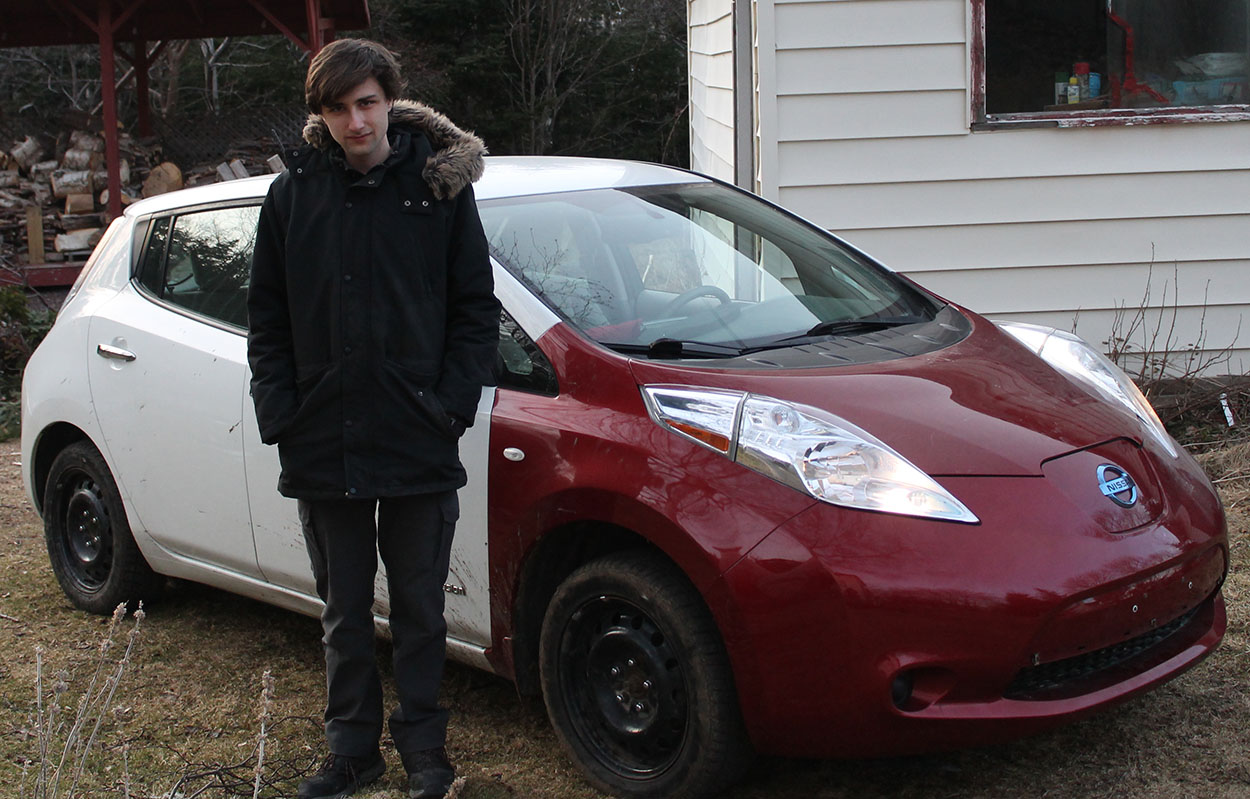A costly collision forces a Torbay student to repair his car at home.

Zac Green
Kicker
This is going to be really expensive, thought Garnet Edinger as his 2015 Nissan Leaf slid into a pole.
On an early November night, Edinger and a friend were driving home after seeing a movie. The roads, which were clear earlier that night, now had an unexpected layer of snow on them.
The roads had become slick.
The sudden snowfall meant Edinger didn’t have time to properly prepare, and his car didn’t have snow tires on it because it was so early in the year. He lost control while making a left turn onto Marine Drive.
While both people in the car were OK, the car sustained a lot of damage.
The front bumper, radiator, air conditioning condenser, the hood and the fenders were damaged.
His insurance provider estimated repair costs could range up to $14,000. The prices were mainly based on the age of the car, only using new parts, and having the work done by a professional garage.
“I did not want the materials in the car that are perfectly fine … basically going to waste,” Edinger said, an engineering student at Memorial University.
Gary Hickey, an auto body instructor at College of the North Atlantic, says body repair costs can vary due to many factors.
“There’s different (alterations) for different vehicles, different types, and that would transfer different times into the labour.”
National hourly labour rates at auto body shops hover around $60 for frame and structural repairs, $50 for body work, and $32 for paint.
Rather than write it off, Edinger decided to work himself. He found parts online, but they were very expensive. A new radiator would cost nearly $400, and an air conditioning condenser would be up to $765.
“The hood cost $1,700 by itself,” said Edinger.
The parts for Edinger’s car were so expensive because of the model of his car.
“From 2013 to 2017 when they (Nissan) switched over to a different design, (there were) only a million (Leaf’s made),” said Edinger.
Instead of paying for all new parts, he bought a used Nissan Leaf that he found in Toronto for $3,500. He then took the parts of that car and installed them on his.
The chemical engineering student had some experience with carpentry and working with small electronics, but never worked on a car before.
“It was good,” he said about the challenge. “I enjoyed working on it. I like learning new things.”
While school and waiting for the donor car to be shipped from Toronto has drawn the project out to four months, he only has fit and finish work left before taking his vehicle for an inspection and getting back on the road.

Be the first to comment